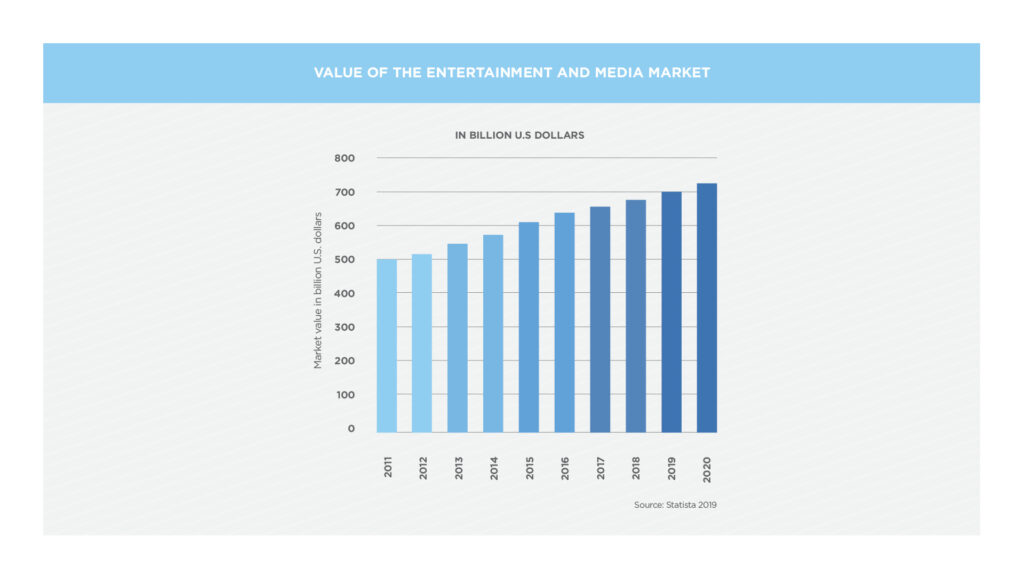Euromonitor International reviews emerging fast-moving trends that are set to cause disruption for business globally.
If there is a common thread linking 2019’s global consumer trends, it’s intelligence.
How we live is so centrally dependent on the choices available that the biggest issue we face is how to make sense of it all. Simplifying your options, having smooth purchasing experiences, being mindful, and ultimately opting out altogether are all intrinsic.


These are the 10 trends:
1) Age agnostic
The boundaries of old age are shifting as people live longer and take better care of their health, appearance, and well-being. Age Agnostics no longer have a passive attitude towards aging, and this is especially true in wealthier developed countries with decent healthcare systems and social conditions. Example: Coboc Germany
Electric bikes are very practical, desirable and frequently beautifully designed products that appeal to all ages. Leading brand Coboc, for example, designs e-bikes that are remarkably lightweight with easy and intuitive handling. The psychological benefits for an aging population are also huge as it makes it easier for people to go out and socialize. According to a leading UK outdoor retailer, Halfords, 62% of e-bikes in the UK are sold to people over the age of 55. Older cyclists are also well-informed on bicycle maintenance, such as repairing punctures and fixing mudguards, a survey by the retailer found.
2) Back to basics for status
Consumers are rejecting the mass-produced and generic, and in 2019, will favor products positioned as simplified, back-to-basics and better quality, with an implied level of status. From the rise of locavores seeking hyperlocal food, to eco-luxe glamping holiday experiences, and from craft spirits and beer to homemade baby food and artisan beauty, consumers are searching for authentic, differentiated products and experiences which allow them to express their individuality.
Terroir is no longer limited to wine and coffee, but is becoming an increasingly prominent feature as consumer sophistication and expectation grows.Example: Tito’s Handmade Vodka US
The most prominent example of a craft spirits brand is Tito’s Handmade Vodka. While the company originally started distilling in 1995, the brand started to gain in popularity to the point that, in 2018, it was one of America’s top-selling vodka brands, as well as being exported globally. With a strong grounding in Austin, Texas, a clear emphasis on the hand-made, artisanal production process, and a prominent brand story and identity highlighting the entrepreneurialism of its founder, Bert Beveridge, its rise reflects the demand for authentic, original products grounded in a sense of place as well as a rejection of the main-stream offerings of the multinationals.
3) Conscious consumer
Conscious consumers are mindful consumers, seeking out ways to make positive decisions about what they buy and look for a solution to the negative impact consumerism is having on the world.
This respectful and compassionate approach to consumption embraces the mindfulness of other human beings, animals, and the environment. Animal welfare has gained momentum in the mind of conscious consumers recently and this is the focus here. Example: L’Oréal France
In 2018, L’Oréal Professionnel launched a new line of vegan and 100% plant-based salon hair dyes called Botanēa in Western Europe. Botanēa is a 100% herbal hair color composed of three ingredients. Cassia, grown in several regions of India, is used as an adjuster and luminizer; Henna leaves release warm copper colors; Indigo leaves deliver color results varying from blue to purple. When mixed with hot water, these three powders enable colorists to create a huge palette of shades and tailor them to each client. L’Oréal Professionnel highlights how it combines the best of nature and scientific research with this product.
4) Digitally together
In our personal lives, we are using online platforms to share experiences to create and engage in activities together.
For the millions of online game enthusiasts and virtual world participants, virtual platforms serve as social hubs that are just as important as in-person ones. From dating to education, we have grown to expect more authentic, life-like interactions online. As our technological capabilities and comfort using them grow, so will the range of things we can do together digitally. Example: Oksusu South Korea
Oksusu Social VR allows users to take on a virtual avatar and move around virtual spaces and engage with other people’s avatars. While in the virtual world, users can virtually watch concerts in venues, attend sporting events in a stadium, or go to the movies, all in the company of friends and new acquaintances.
This creates an online community where users can make new friends or meet up with existing ones online with the added dimension of virtual reality.
5) Everyone’s an expert
In an era where everything is available at the touch of a button, consumers now consider hyper-availability as the normal baseline for their research and shopping.
Naturally, we want top quality for the lowest price. The countries that will generate the most revenue in internet retailing in 2022, according to Euromonitor, are China, Japan, the USA, the UK and India. It’s no coincidence that ‘best’ was one of the most searched-for terms on Google in these countries in 2018. Example: FIIT UK
Described as ‘the Netflix of fitness apps,’ FIIT is an app that elevates the healthy living trend by offering subscribers classes and routines hosted by world-class instructors. The app can connect to smart TVs and allows real-time physical interactive tracking with a chest strap that monitors exertion and performance, encouraging improvement and benchmarking. FIIT is different because it creates a bridge between at-home exercise routines and gyms, offering home workouts that have a built-in, trackable element that most apps do not offer.


6) Finding my jomo
Boundaries between work and our social lives are blurring and so are those separating the private sphere and the social.
Social networks give the illusion that we all should be doing something exciting and saying (or posting) something for others to acknowledge.
The fear of missing out, of being left out, has given place to the re-appropriation of self-time. To protect their mental wellbeing, consumers want to be more intentional with their time, to set their own boundaries and be more selective in their activities.
Concerns over personal data protection mean consumers are also increasingly more intentional in the way they manage their privacy online. The need for finding their JOMO is currently seeing consumers reduce their time online or cutting down on their social engagements, in favor of real-life experiences which they no longer feel compelled to share on social networks. Example: COOKiamo Italy
COOKiamo offers cooking courses with the aim to get people to enjoy time together, while preparing, cooking, and eating the food. In the provincial town of Treviso, COOKiamo connects locals to international foods with renowned chefs while giving attendees the opportunity to interact in real life. Such events are set in locations that are reminiscent of a real home kitchen and a dining room to help participants feel more relaxed.
7) I can look after myself
The focus of this consumer-driven trend is on preventative, consumable measures against illness, unhappiness, and discomfort, that people can take without having to consult a professional.
The trend is characterized by forms of personalized restriction, the self-imposed ‘decluttering’ of one’s life; be it in the area of diet, house or wardrobe, that leads to versatility, and in theory, more choice. Example: TellSpec Canada
A hand-held scanner that offers real-time food testing, food safety, and food authenticity. The scanner can be pointed at a foodstuff (unbranded, such as a piece of bread) and the nutrient composition (per 100g by default) is automatically analyzed, using Raman spectroscopy.
The details of the food can be stored in the app and added to daily food diaries. The food tracking system compares the contribution of the given food in relation to daily recommended intakes. The feature of ingredient and nutrient recognition could potentially be extended to food safety applications.
8) I want a plastic free world
The push for a plastic-free society has gained momentum over the past twelve months, and in 2019, consumer desire for a plastic-free world will grow.
Plastics, such as single-use packaging for food and beverages and micro-plastics found in beauty, personal, and home care, as well as plastics produced by the fast fashion industry, are coming under increased scrutiny as the ‘Blue Planet Effect’ shines a light on the plastic-based waste products that end up polluting the natural world. Example: YVY Brazil
In Latin America, companies are innovating and leading the way in minimizing plastic packaging. YVY, a home care brand launched in 2018 in Brazil, is attempting to make the way consumers clean their homes more sustainable. The brand has designed a capsule system, like a coffee-pod, for cleaning products. Consumers sign up for a monthly subscription box, containing capsules delivered to their door. They are then inserted into reusable bottles with nozzles to spray and clean various items and surfaces. Once the capsule containing the cleaning product is empty, consumers can post the empty pods back to YVY free of charge to be recycled and reused.
9) I want it now
Consumers are as busy as ever.
They are beginning to expect more from companies and want products and services delivered to them as quickly and simply as possible.
They increasingly turn to apps that help them organize their lives and are especially intrigued by innovations that help them avoid queues, reduce waiting time, and synchronize their personal information and preferences. Example: Medici South Africa
Medici recently established itself as an app allowing people to use text or video to consult with a doctor securely and instantly. The app was first established in the US, and its South African CEO expanded its operations to South Africa to tackle some of the costs and hassle of consulting with medical professionals there. Medici argues that its app provides the ultimate convenience for the consumer with consultations available for all medical professionals, including primary care physicians, psychologists, dentists, and even veterinarians.
10) Loner living
One generation is redefining the trend of living alone—older generations. is cohort of single later lifers (typically 50+) is generally wealthier and, while some have been single their whole lives, many are divorced or widowed and may have adult-age children.
And this generation is not alone in experiencing the solo lifestyle.
While baby boomers may have been well known for the high rate of divorce among their cohort, many of those belonging to younger generations have rejected marriage and even cohabitation altogether. Baby boomers are setting the stage for a trend that is bound to outdate their generation, which will alter how products and services cater to the loner living lifestyle. Example: OpenTable US
One of the major taboos solo living consumers face is the prospect of dining alone. Many busy professionals regularly dine solo, with more than 30% of Americans dining alone due to hectic lifestyles, while long work hours in countries such as South Korea have made solo dining a norm. OpenTable, an online platform that allows customers to make reservations at restaurants, is extending the idea of solo dining through its pilot program in Virginia, US. When adventurous diners request an ‘OpenSeat’ on the platform, they are paired with other solo or groups of diners, as well as being offered a free appetizer.












